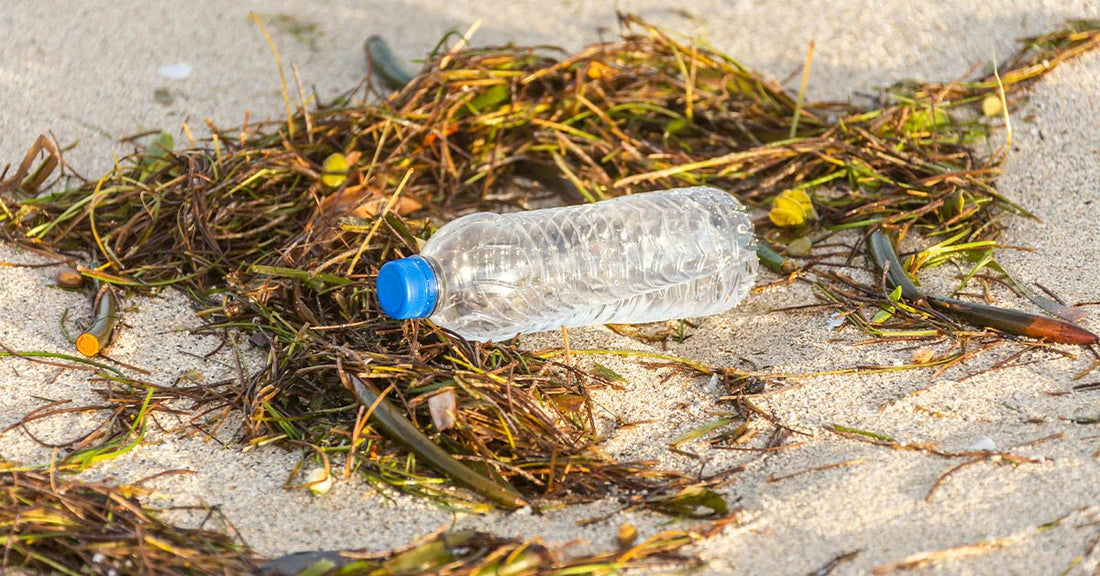New Plastic Breakthrough Turns Pollution into Plant Food
Matthew Russell
It looks like plastic. It acts like plastic. But it vanishes in saltwater—completely, in a matter of hours. Scientists in Japan have created a new material that could rewrite the future of ocean conservation, starting with the packaging we toss away every day.
Developed by researchers at the RIKEN Center for Emergent Matter Science in collaboration with the University of Tokyo, this new plastic isn’t just biodegradable. It’s seawater-soluble, leaving behind no microplastics, no toxins, and no carbon dioxide emissions when it dissolves.
More than a cleanup solution, it offers something radical: regeneration. As Interesting Engineering reports, the remnants left behind are nutrients plants can absorb—specifically nitrogen and phosphorus.

A new plastic dissolves in seawater within hours.
From Salt to Solution
At the heart of this breakthrough are supramolecular polymers. Unlike traditional plastics, which rely on strong covalent bonds, supramolecular plastics are made from reversible molecular connections. That structure gives them two key traits: strength and solubility. As Technology Networks explains, the team mixed sodium hexametaphosphate—a food-safe additive—with guanidinium ion-based monomers, forming “salt bridges” that hold the material together.
But here’s the twist: those same salt bridges collapse in the presence of more salt. In seawater, the ionic structure breaks apart, transforming the plastic back into its original building blocks.
Within hours, the material dissolves. In controlled experiments, it disintegrated in under nine hours, Reuters reports.

It may help countries meet international plastic reduction goals.
No Trace Left Behind
Unlike conventional plastics that linger for centuries, breaking into microscopic shards, this new material leaves no trace. Not only does it avoid contributing to the 358 trillion microplastic particles already floating in the ocean, as Interesting Engineering points out, but its remnants can be reused or absorbed by bacteria and plants.
The potential for recycling is also promising. After being dissolved in saltwater, about 91% of its hexametaphosphate and 82% of its guanidinium components can be recovered, dried, and reused, according to TexSpace Today. That means this isn’t just a throwaway alternative—it’s a closed-loop material that aligns with a circular economy.

The new material releases nitrogen and phosphorus into soil.
Strong Enough for Everyday Use
One of the challenges in replacing plastic is performance. This new material meets the mark. It's durable under normal conditions and customizable depending on the need. With slight changes to its composition, the plastic can become rubbery and flexible or tough and scratch-resistant. That flexibility makes it suitable for packaging, containers, 3D printing, and even medical applications, Designboom reports.
It's also non-flammable, transparent, and moldable above 120°C. These traits allow it to fit into existing industrial systems, something few green alternatives can claim.

Packaging, containers, and implants are potential use cases.
A Natural Fertilizer in Disguise
On land, the innovation continues. In soil, this plastic fully breaks down in around 10 days. And it does more than just vanish—it improves the soil by releasing nutrients. As BBC Newsround explains, the breakdown process enriches the earth with phosphorus and nitrogen, two key elements in fertilizer.
That’s not just a bonus—it’s revolutionary. Instead of poisoning ecosystems, this plastic helps them heal. That soil-enhancing property makes it ideal for agricultural applications, including mulch films or planting containers that leave behind nourishment as they degrade.

This innovation could mark a turning point in global pollution control.
One Breakthrough, Many Possibilities
The applications are wide-reaching. In medicine, its biocompatibility opens the door to single-use devices that won’t leave waste behind. In shipping, it could replace plastic wrap with a version that disappears without a trace. Even in consumer packaging, this could be the alternative to the plastic bags clogging waterways and coastlines.
And while the researchers caution that scaling production is still ahead, the global implications are clear. The new material could help countries meet international treaty goals for reducing plastic waste and emissions, TexSpace Today reports.
A Turning Point for Plastics?
Plastic pollution has been one of the defining environmental challenges of the last century. The invention of a material that can vanish in seawater, nourish the earth, and be reused multiple times is no small feat. It’s not just innovation—it’s hope.
The new supramolecular plastic from Japan offers something we’ve never seen before: a way to keep the convenience of plastic without the cost to the planet. If it reaches mass production, it could become one of the most important environmental tools of our time.

